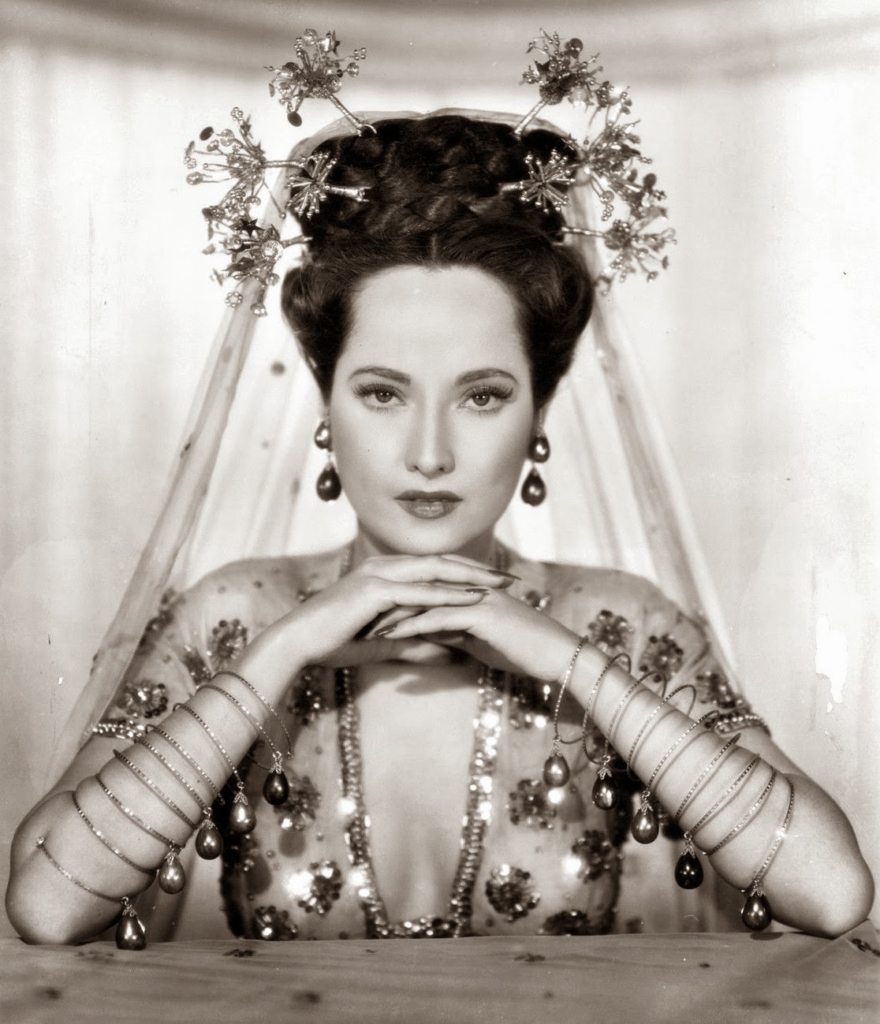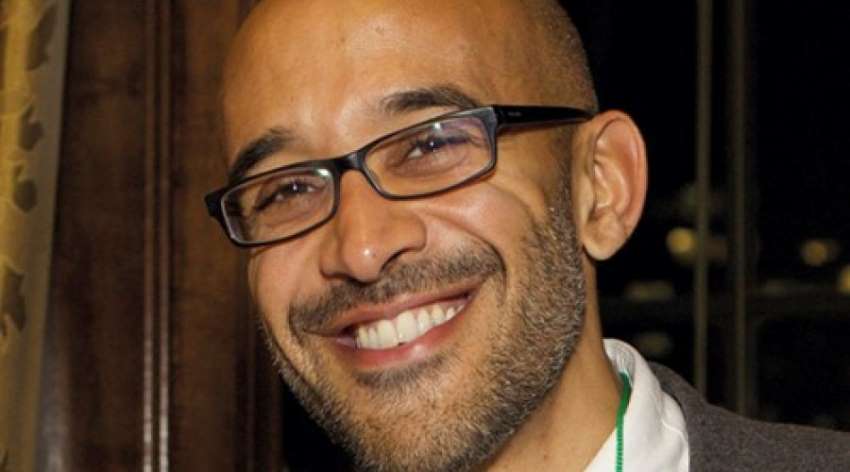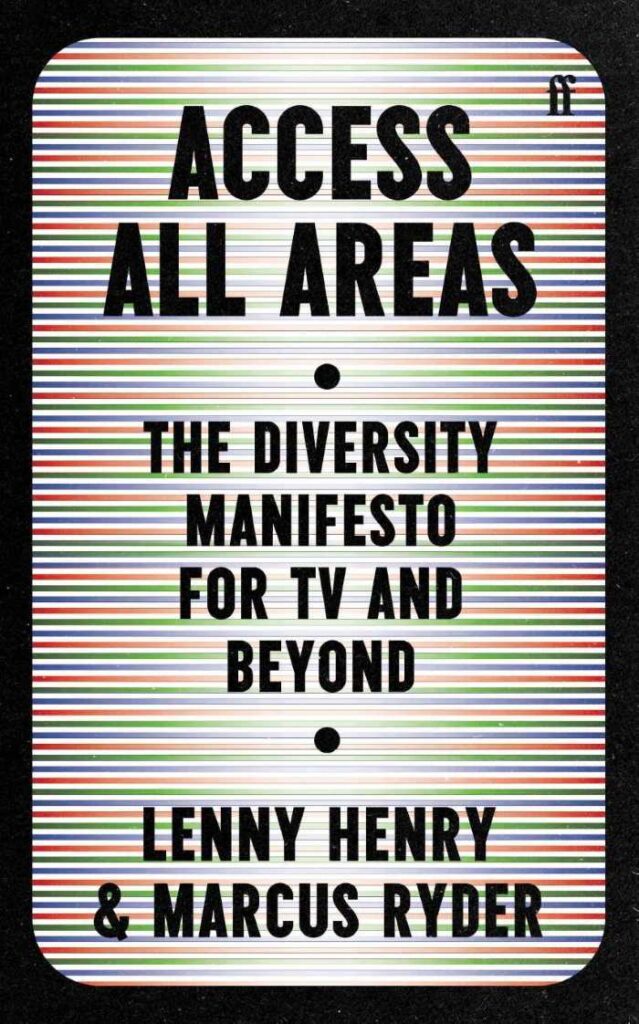Passing the Mundair Test

Michaela Coel’s ‘I May Destroy You’.
Raman Mundair presents an idea – akin to the Bechdel Test – on how we should assess the artistic and creative representation of people of colour (PoC) in theatre and other forms of broadcasting.
When I heard about Rebecca Hall’s film ‘Passing’- based on Nella Larsen’s 1920s novel that explores the practice of racial passing – I immediately wondered what skin did Hall have in the game. I wasn’t aware that Hall is actually of mixed heritage – a complicated ancestry that includes African American roots, yet this was not something that immediately comes to mind when I consider the body of her work.

It’s common in our culture to know titbits about our celebrities so why did we never hear about this aspect of her life? Perhaps it was thought irrelevant, or maybe of no value? Or did it seem like a fact that disturbed the Rebecca Hall brand? Hall is frequently cast as the smart, understated femme fatale, or a rare English rose. Does it matter? It does. I have no doubt my 7, 9 and 11 year old self would have felt differently had I known Freddie Mercury was Indian in heritage. My school life would have been different had I known that the rock stars my white peers were revering like Slash and Eddie van Halen were not in fact white.

I am a fan of old black and white movies, and have enjoyed them from childhood. I would have had a different experience had I known that Merle Oberon was in fact of Indian heritage. Oberon was born in India to an Indian mother. She ascended to stardom through suppressing her origins and Oberon, rather than disown her mother passed her off as a servant. Carol Channing, John Gavin and Raquel Welch are amongst the stars I watched and later learned were all passing.
And then there is the music industry – where we find Norah Jones whose father was no less than the maestro Ravi Shanker and more recently Charli XCX – who is of Gujarati and Scottish heritage. XCX is the mastermind behind the fabricated indie pop group Nasty Cherry – an experiment in popular culture engineered by XCX as an attempt to create the group she says she would have liked to see growing up. Yet Nasty Cherry is far from diverse and on the surface presents as four, edgy, Gen X, white girls. On closer inspection I find that the lead singer does in fact have Latino heritage but this is not part of the identity she asserts. Her chosen community is a white hipster space. She is not presented as rooted in a diverse heritage or from a wider community with a rich, complex, thriving culture. Instead she is aspirationally white.

Merle Oberon
To see positive representation of myself as a person of colour (PoC) in the arts makes a huge difference to me and would have made my younger self feel a little cool, a little less hidden, quiet shame of feeling wrong and out of place. It would have encouraged the possibility and freedom to think that I could be rock and roll. That I could be Hollywood. That I could be the National Theatre. That I could be Top of the Pops. That I could be the National Opera. That I could be ballet. Representation matters. Passing is a warped privilege. It is a twisted head-space that robs our imagination. Yet, it is, of course, a survival strategy. It’s about presenting yourself in a palatable, acceptable, non-threatening way in order to exist and function in the sea of default whiteness we all swim in. But it murders more than it allows to take root and live. It’s worth clarifying that the term ‘whiteness’ does not describe white people, but instead the insidious and attritional impact of the underlying and systemic power structures of white majority communities and culture.
Passing in this context is a form of operating and surviving whiteness and white majority communities. It comes into play when you are unable to be the non-threatening exception, the only person of colour in the village, town, office etc. As a person of colour you may find yourself in a context where your cultural capital and stature is measured in relation to whether you are an exception – the only Black person, Black family in the village for example as opposed to being a member of a growing, functioning and blooming, wider Black community.

Rachel Welch
A tragic yet interesting feature of this is that it can impact the way PoC see ourselves and each other. An example of this is when a PoC has capital in a predominantly white community, space or culture and another PoC arrives, joins or is employed. Often there isn’t immediate solidarity, if at all. Because the oppressive structures and systems of whiteness create an environment where a PoC’s sense of personal safety is attached to being the exception, the only one, the novelty, which in essence all asserts one thing to whiteness: I am not a threat.
Another PoC arriving disturbs this survival strategy. The first PoC feels threatened because their security exists in being the only one. Safety is being scarce and on the down-low, being of use and interest. Having a role, serving a need, but not presenting as being part of something wider, bigger, stronger. Not asserting that you are from a rich, powerful cultural heritage and ongoing community that in fact has a history that precedes whiteness.
Recently I heard the brilliantly eloquent Marcus Ryder, an academic, executive producer and co-author of ‘Access All Areas: The Diversity Manifesto for TV and Beyond,’ talk about representation and ideas of community. He asserts that currently, what we are used to seeing is single or ‘exceptional’ Black and brown characters. They are often the only Black character inhabiting a functioning white community or a majority white community. Black communities on screen on the other hand, are portrayed almost exclusively as dysfunctional. While many of the Black people portrayed in a drama set in a non white community may be likeable, the community they are set in is normally seen as anything but.

Marcus Ryder
The message that comes across loud and clear is that while there might be good Black and brown individuals, Black and brown communities are a problem. Black and brown communities are ‘others’ to be feared, to be reviled, to be treated with suspicion. It suggests that if you are a good, positive Black person you should want to leave the dysfunctional Black communities as quickly as possible. That representation of Black and brown characters intrinsically include aspiration towards a proximity to whiteness.
These are of course unspoken, coded messages. They are set up and we are primed to read them. We are constantly imbibing these implicit negative views about Black communities and we’ll often see similar messages about South Asians on screen – where there might be positive, individuals from the Indian subcontinent, the community is invariably problematic – the trope that is perpetuated is a community that promotes forced marriages and creates potential terrorists. The same with Arab communities and East Asian communities (tired tropes where communities can’t speak English, run a restaurant or shop, are obsessed with money, gambling and gang culture etc.) Yet in reality the fact is while dysfunctional Black and brown communities certainly do exist [as there are dysfunctional white communities], there are also good, positive functional and flourishing Black and brown communities.

What we need to see in terms of representation and what resonates with and changes people, is the portrayal of community and this is what has been missing in so much of the diversity debate. An example of this is the award winning television drama, Killing Eve. We do not see any reference to Sandra Oh’s character’s Korean heritage, until she has left her white husband, lost her job – a job where she is predominantly working with white people, and she has hit a complete emotional and psychological rock bottom. At that point, she takes a job in the most stereotypical of East Asian occupations – she works in a Korean restaurant. It occurs to me that the writer and producers probably thought that this was a stroke of diversity enhancing genius, but the way it actually lands is this: although they cast Sandra Oh in a role originally written as a white character, they failed to represent her as rooted in a community that is held in high regard, status or value.
The subtle messaging is that no-one would ever want to be part of this particular community if they could avoid it. The character Sandra plays only returns to this community when all is lost and she has nowhere else to turn. What is this telling us? That specifically in this character’s case, her power and autonomy lies in the context of whiteness and not in her community and heritage. The message is you may share some of your community and heritage if you must but only in small, palatable, preferably food related contexts. This sounds very familiar to me. It’s the same wider societal messaging around diversity and culture: we allow your food, music etc. to cross borders, to exist within whiteness on a commodified basis but we don’t want the communities this abundance is rooted in.
When there is representation that exists outside the context of whiteness, such as the 2020 Sainsbury Christmas advert depicting a happy, warm, Black family enjoying Christmas dinner, it resonates and was welcomed by Black people. Why? Because it shows a happy functioning Black family in the context of their community. It represented the powerful, implicit possibility that Black people can be happy without white people. It’s not stating that white people make the Black family unhappy, it’s not about racial trauma, it’s the revolutionary idea that as a Black person you can be happy and whole with your own and that you don’t need white people to achieve happiness. This clearly was a radical, new imagining and representation and it clearly touched a nerve and the reception the advert received is not at all surprising. If Killing Eve had been set up in this way we would have seen Sandra Oh’s character maintaining her power and happiness and being part of a functional Korean community.
BLM and the murder of George Floyd has seen a lot of people within the creative industries reflect on issues of race and representation and this has taken on more urgency and there is a buzz around the concept of Authentic Representation. What is not clear or fully realised is what this would actually consist of and what does it look like? Ryder suggests that it must fundamentally include representation rooted in community. I would agree and go a little further.
Recently British East and Southeast Asian media advocacy group, BEATS, rolled out a ground-breaking new representation measure for the U.K. broadcasting industry. The initiative is fashioned after the Bechdel Test, which evaluates portrayals of women in media, and the Riz Test, a measurement of Muslim representation inspired by Riz Ahmed’s rallying 2017 speech about diversity.
I propose the Mundair Test. A simple checklist which should be considered at the start of projects rather than tacked on as an afterthought or token gesture.
I call for the following when it comes to artistic and creative representation of people of colour (PoC) in theatre and all forms of broadcasting:
Representation that shows PoC:
-rooted in communities, not just their own but how they code switch between other spaces and belong in multiple spaces.
– in functioning friendships, relationships & communities that mirror their heritage.
– in the intersections of different worlds and experiences in a nuanced way and reflects actual PoC lived experience.
– happiness is not dependant on white people
– do not exist to compliment a white character but are a fundamental part of the narrative and have a functioning world outside of whiteness.
– without a focus on race based tragedy and trauma – that is to say that it should not be the sole intent of why the PoC exists in the narrative and that is all that they can bring in terms of their character’s story.
– communities across class in a nuanced way. We are not all in gangs, living on estates or running corner shops or high caste medical professionals.
– with functioning visible or hidden disability that doesn’t focus on tragedy or trauma.
– queerness that doesn’t focus on tragedy, trauma or hyper sexualisation.
– women that doesn’t exoticise, fetishize or involve any hyper sexualisation of them.
In short, I call for representation that affords PoC the same humanity and complexity that whiteness offers itself. Seeing and showing ourselves and representing PoC as part of a community and not in isolation is a revolutionary act. It shows we survived. We thrived. We stood our ground. We connected and forged a community. Being part of a community is not only subversive, it is seen as an outright threat and we rarely see it represented well or with any integrity or authenticity.
White systems, structures and establishment intuitively know this, perhaps on a deep, buried level. They know that presenting a mirror that reflects, uplifts and truly represents PoC simultaneously destabilises the sense of white self and that’s precisely why they choose not to do it, encourage or reward it.
Mainstream awards like the Oscars and Golden Globes are perhaps a questionable barometer of success but what gets left out is significant and casts a glaring light on what is seen as more palatable and mainstream. The fact that Michaela Coel’s I May Destroy You was left out of all the categories for the Golden Globes announced recently is very telling. Coel decolonised British drama and successfully created a world that showed PoC rooted in community and friendship and not reliant on whiteness for happiness. Her Black characters were authentic, true and engaging and had genuine autonomy and that is something we rarely see. We should be beyond passing and making ourselves palatable, we deserve authentic representation that offers a chance to recalibrate tired narratives and offer quality art and entertainment that actually makes a difference.
You can follow Raman at:
Twitter: @MundairRaman
Instagram: @ramanmundair + @rmundair

A good article. It took me a while to get into it.
As someone who is a mix of Georgian, Armenian, Ukrainian and English; And now Scottish by choice and residence I have encountered low level discrimination all my life, starting with a studied inability to pronounce my name. It has got better in the last few decades but I sometimes feel “White” should be replaced by “English/American white”. I know things are bad on the mainland too but I think it is generally better there than here.
Which means I would like to see this concern extended, where possible, to minority “Caucasian” groups. Roma and travellers suffer the same stigma for instance and anti semitism is still widespread, especially in the multicolour tory parties in Westminster.
“Roma” and “travellers”, although often sharing a “Gypsy” culture, are not always the same. In general Roma are people of colour, coming originally from India, while travellers are indigenous to the country they are based in.
Didn’t ‘white’ people originally come from Africa?
Class not our perceived ‘racial origin/identity’ is the main determinant of our life chances.
Always has been, always will be.
Dividing people along so called racial lines will end in tears
I can understand the reasoning behind the Mundair Test (is the lack of versioning for these tests a kind of humilty? is there only ever going to be the one?) and its conditions, but I think the article is too concerned with contemporary depictions of society. There are two time-displaced zones, to the past in historical drama and the future in science fiction that should be addressed. My impression of modern British historical drama is that it tends to veer towards the rosy and raunchy, and therefore tends to make past British society look much more functional than it seems to have been. Science fiction can deal with near-future society (perhaps the BBC is forbidden by royal charter to make anything set in any times where secession is mentioned), and dystopias, and maybe post-racism (with usually new divisions, like norms and muties), and writers have the opportunity to suggest how these issues have been resolved (or faded in comparison with new ones).
Particularly contemporary and historical drama may suffer from essentially propagandist forces, the biases towards making creators and audiences feel something good about themselves. The glamourised superficiality of much of it (the star appeal, the style over substance, over-sexualisation, attempts to mimic past successes) will also tend to produce biases that make the real life existing outside of them seem even grottier by comparison. Colour is not the only diversity, discrimination or over-representation problem in the creative industries in the UK.
Another strand for tackling issues is to use new or different media to show what representation could be like. The games industry had a bad start representation-wise, but could be the platform where new solutions are born. While it has been reasonably criticised for simplified cultural tropes, the latest version of Sid Meier’s Civilization is intent on adding world cultures, and not only are these depictions of functional and successful societies, they each have particular specific benefits that encourage players to adopt them:
https://civilization.com/en-GB/
it may lack nuance, but the cultural references may educate and fill a void, and more games which let the player choose unfamiliar cultures to play may be more successful than broadcast or theatrical drama in spreading more authentic representation in the mainstream. Of course, there is also nothing preventing a computer game from failing the Mundair Test on all counts, but maybe they would not be so popular today, if gamers could choose.
As someone who is black, I find it somewhat disheartening that the writer fails to acknowledge many black and people of color both present and past (particularly black women and black lgbt groups) who have organised and raised around some of the issues the writer speaks to. This dilutes the issues and presents the situation iwhich black and people of color escape critique because of the framing.
For example? I’m not sure what you are referring to but I’m very interested in finding out more. Care to elaborate with links/examples? That said, this is an excellent article and you can’t expect a writer to cover everything here – it is an article not a thesis after all!
The Mundair Test makes sense to me.
Practicable, de-colonising and hopefully life-enriching!
Way to go!